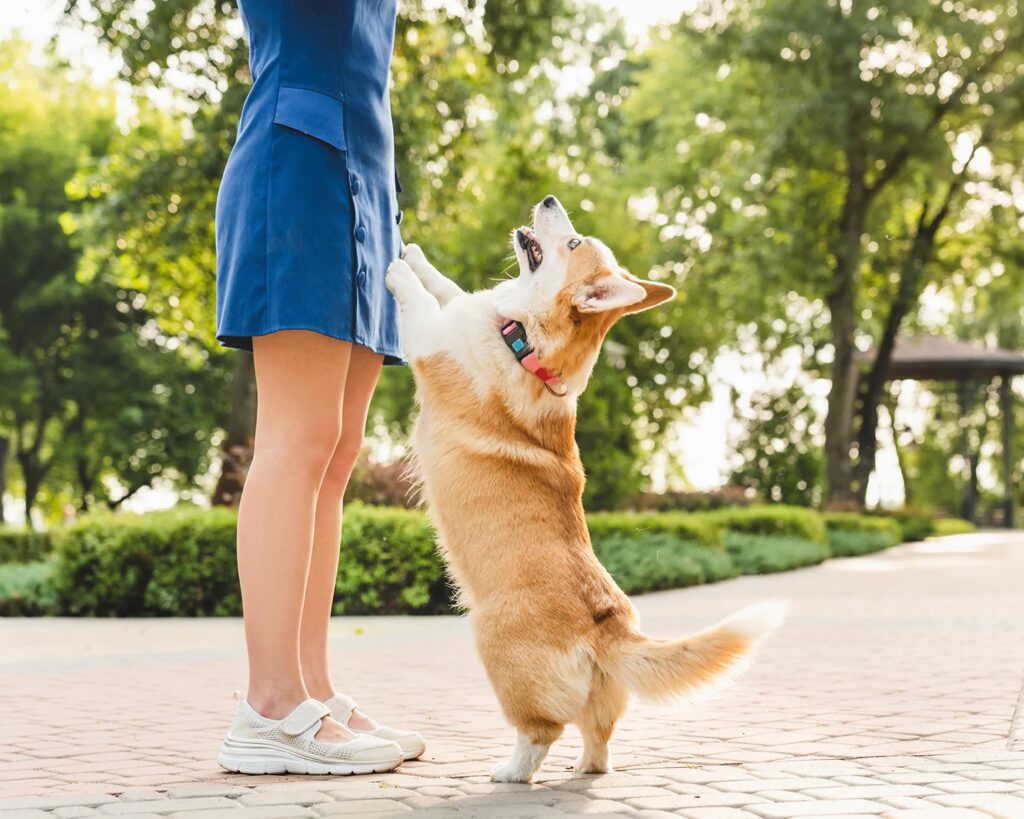Amongst the top to-do-advises from an experienced pet parent to a new one will most definitely include training the new little doggo to pick up a few cues or commands. Doing this may help you organise and arrange not just your furry baby’s but your own life as well as a brilliant pet parent.

Why to cue – train your pups?
It’s better to keep training your doggo with small but significant things ever since they are small. Teaching them while they are still young may help them pick up new culture easily. These learnings do stay with them lifelong and make them a better private-at-home and public furry friend.
In the longer run, it is you who benefits from this. You must always look at fostering a pet baby who comes out disciplined, obedient, friendly, under control and seldom messes around in the house. Moreover, inducing the right behaviour in your paw-buddy for a better conduct in private and in public both can make him a lifelong happy folk.

How do you do it?
Some dedicated effort and a whole lot of love!! That’s all.
You might have to spend about 10-15 minutes, several times a day until you start noticing your tiny pet picking up your instructions. If you have a larger and a strong breed, you may look at professionally training them while they are small. Remember that reward based trainings always help better and faster.
The understudy is that you have to continue instructing them alongside the trainer’s work. Practice the commands and cues throughout for a better training and sustenance.
Here are a few basic cues you would love your furr’ocious baby to learn –
1. Look
- One of the most basic and crucial commands. This command may help you while you are training them other important commands.
- Ensures his attention stays focussed on you and what you want them to do.
- Helps them not get distracted or waver off.
2. Come
- Another basic cue that may help you deal with a hyper pet-doggo.
- You may find yourself using the ‘comecommand,’ more frequently than ever. However, make sure you call them for good reasons
- You may also praise, treat them or cuddle with them right after they come to you on giving them this cue.
- This cue is a saviour if your pet slips of its leash when outdoors or is clueless about a new environment and has gone astray.
- Also helps a great deal if you love outings with your furry companion or live in a mansion!
3. With me
- ‘With me’, ‘easy’ or ‘no pull’ are a few commands that work the same. You can pick the one that suits you and your fur-baby the best.
- This cue helps your furry friend from pulling while on leash and walking relaxed, in the same pace as you.

- If your pet is this cue friendly it indicates that you do not have to worry while outdoors on walk. You may also stroll leash-free in some cases.
- Avoid walking off-leash in case the place or the environment is new for your pooch. Also, avoid it at a time when there are other pets around for unwanted aggressive situations.
4. Leave it or No
- Helps your doggo understand what not to pick up.
- A command that’s most helpful to the pooches who are explorers by instinct and may want to sniff at or pick up random things that could be harmful for them.
- Leave it or No are just as basic as cues that may also help your baby from getting into wrong chewing behaviour. Chewing on shoes, furniture or electric wires that pose a threat for your pet can be easily avoided.
- The ‘drop it’ cue is an extension of ‘leave it’ or ‘no’ command.
5. Drop it
- It is essential to have your furry baby drop down anything harmful that it has already picked up.
- Our pets may take in a lot of germs that can be a threat to their health by holding on to unwanted stuff.
- If they are already chewing your favourite pair of shoes or the headphone wires, the ‘drop it’ cue will get them to release the object of chewing, helping you and them both.
- The right way of practising this cue with your furry baby is by replacing whatever you have asked them to drop with their favourite treat.
- Have them drop what’s not so advisable and reward them instead.
6. Sit
- Usually the first cue that pet people teach to their dogs to avoid the unwanted running around.
- This cue also helps while your dog is likely to indulge in multiple unwanted behaviour around guests, neighbours or helpless kids. Have them avoid pouncing, jumping or pacing around with people who aren’t so comfortable around your pet.

- Furry babies love to eat your food and by training them to sit you are only helping them from jumping on you while you are eating or your food.
- If they are nervous and hyper, having them sit down may also help them relax and be just fine.
7. Lie Down
- This command like many other may help you handle several behavioural problems that are common in pets.
- If your furry baby is hyper and you want to encourage them to relax ‘lie down’ cue may be of great help.
- It may also promote calm and composed nature in an ailing pet.
- Some parents are excited to train their doggos to do activities such as rolling over, the cue ‘lie down’ sets in the mood for the same.
8. Stay
- ‘Stay’command is the most suitable to pull your pet off in an emergency or similar situations that need to be avoided.
- You must always know to handle your furry friends while outdoors as they may unknowingly run into unfortunate situations.
- The actions of animals after all are unpredictable. With this cue you may be successfully able to control your pet baby, avoiding aggressive situations between you and other’s pets or even strays while out on street.
9. Off
- This command will help your visitor friends and neighbourhood stay calm around your pets. Since dogs have a tendency to sniff or even excitedly jump on new people, you may be rightly be able to control your paw buddy.
- If you want your lovely bed to stay off your fresh couch or bed, just make them get accustomed to this cue.
- Discouraging your pet babies to behave spoilt, pouncing and jumping for no reason whether on people or things is the best kind of behaviour to induce.
10. Wait
- A general cue that you would definitely want your little furry baby follow and not get around running wild.
- This cue will motivate your pet to stay put and not move forward without your approval.
- When you unleash them, throw open the crate for them to hop out or keep your house doors open, the wait command will control your baby from gushing out and ending up in some kind of unforeseen trouble.
- This cue is also directive of your pooch patiently waiting for something you are about to give away. When you say ‘wait’ you essentially mean ‘wait, have patience before I give you something you like.’
- Quite similar to the ‘stay’ cue, ‘wait’ may show some happiness, in the form of treats or toys, coming their way most of the times.
Predominantly, training your best buddies with different cues and commands enables the right behaviour in them. In addition you also bond well with a common language that enables a better understanding between you two.
Disclaimer: The information contained in this blog is for informational purposes only and the readers may use or apply the same at their will. We believe in the uniqueness of every pet and its parent. Therefore not every piece of information and idea presented here may be suited to all.



